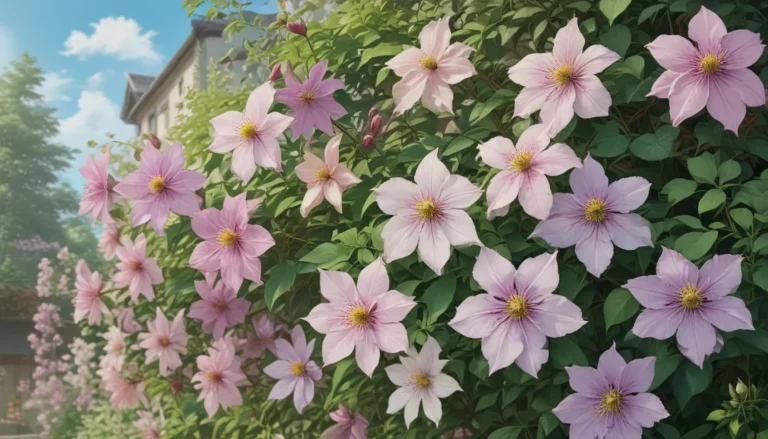Comprehensive Guide on Growing and Caring for Fruiting Cherry Trees

If you’re like me and can’t resist the temptation of fresh fruit, cherries are surely at the top of your list. There’s something special about biting into a sweet, juicy cherry picked right from the tree. Now, imagine having your very own cherry tree in your backyard bearing delicious fruit year after year. Sounds like a dream come true, right?
Well, the good news is that with a little patience and proper care, growing cherry trees is a rewarding experience that anyone can enjoy. Whether you’re a seasoned gardener or a complete newbie, our comprehensive guide will walk you through everything you need to know to successfully grow and care for these delightful fruiting trees.
What Are Fruiting Cherry Trees?
Cherries belong to the Prunus genus and are stone fruits that produce fleshy material surrounding a single seed, known as drupes. They are closely related to other stone fruits and nut trees such as peaches, apricots, and plums.
Choosing the Right Cherry Tree for You
When it comes to cherry trees, there are two main types you can choose from – sweet cherries (Prunus avium) and sour cherries (Prunus cerasus). Sweet cherries are perfect for fresh eating, while sour cherries are commonly used in baking and cooking.
- Sweet Cherries:
- Ideal for Zones 5 to 7
- Require spacing of 35 to 40 feet apart
-
Self-sterile, plant at least two or three trees for fruit production
-
Sour Cherries:
- Grow well in Zones 4 to 6
- More cold-hardy than sweet cherries
- Self-sterile, plant at least two or three trees for fruit production
Choose the type of cherry tree based on your preferences and the growing conditions in your area.
Patience Is Key
It’s important to remember that fruiting cherry trees take time to mature and start producing fruit. Plan on waiting for about three to five years before you can enjoy a bountiful harvest of fresh cherries. Good things come to those who wait!
Planting Best Practices
When planting cherry trees, make sure to:
- Choose well-drained soil with a pH of 6 to 7
- Plant in full sun for at least eight hours a day
- Consider espaliering for dwarfing rootstock
Taking the time to prepare the soil properly and provide adequate sunlight will set your cherry trees up for success.
Water and Nutrient Requirements
Cherry trees have modest water and nutrient requirements. Here are some tips for watering and fertilizing your trees:
- Water weekly during dry spells
- Use a low nitrogen fertilizer once a year
- Compost twice yearly for added nutrients
By providing the right amount of water and nutrition, you’ll help your cherry trees thrive and produce healthy fruit.
Pruning and Thinning
Proper pruning and thinning are essential for cherry tree health and fruit production. Here’s what you need to know:
- Prune in early spring and late summer
- Shape the tree in early spring and thin the canopy in late summer
Regular pruning and thinning will promote better airflow, prevent disease, and improve fruit quality.
Dealing with Pests and Diseases
Cherry trees are vulnerable to pests and diseases that can affect fruit production. Keep an eye out for common issues like aphids, borers, powdery mildew, and cankers. Using organic sprays and practicing good garden hygiene can help prevent and manage these problems.
Harvesting and Storage
Harvesting cherries is a delicious and rewarding experience. Here are some tips for picking, storing, and preserving your cherry harvest:
- Harvest when fruits are firm, tender, and juicy
- Store fresh cherries in the refrigerator for up to a week
- Freeze excess fruit for longer-term storage
Enjoy the fruits of your labor by savoring fresh cherries or creating delicious preserves and baked goods.
Recommended Cherry Tree Cultivars
With so many cherry tree varieties to choose from, here are some popular cultivars to consider:
- Bing: A sweet cherry ideal for fresh eating
- Rainier: Known for its juicy taste and abundant yields
- Montmorency: A popular sour cherry perfect for baking
Selecting the right cultivar based on your preferences and growing conditions will ensure a successful cherry tree harvest.
Quick Reference Growing Chart
For easy reference, here’s a summary of key information about growing cherry trees:
- Plant Type: Stone fruit tree
- Hardiness (USDA Zone): 4-7
- Exposure: Full sun
- Water Needs: Moderate
- Common Pests: Aphids, borers, powdery mildew
- Soil Type: Sandy, loamy
- Height: 16-25 feet
Use this quick reference chart to guide you in caring for your cherry trees throughout the growing season.
Get Growing Your Cherry Trees
Growing and caring for fruiting cherry trees is a fulfilling and rewarding experience that can yield delicious results. With proper planning, patience, and attention to detail, you can enjoy a bountiful harvest of fresh cherries year after year.
Whether you’re a seasoned gardener or a first-time tree grower, our comprehensive guide has everything you need to know to successfully cultivate these delightful fruiting trees. So roll up your sleeves, grab your gardening tools, and get ready to grow your very own cherry orchard. Happy planting!





